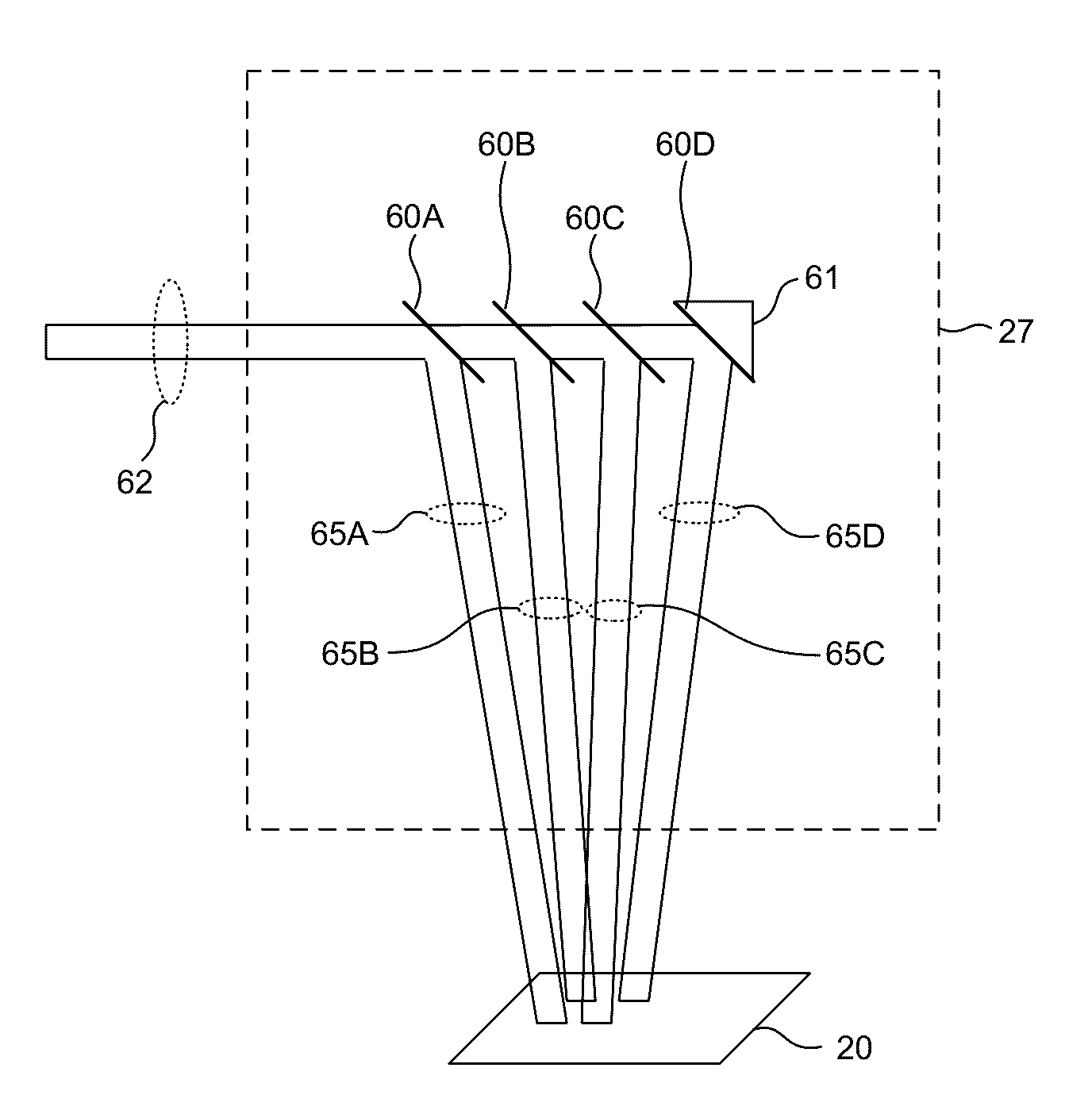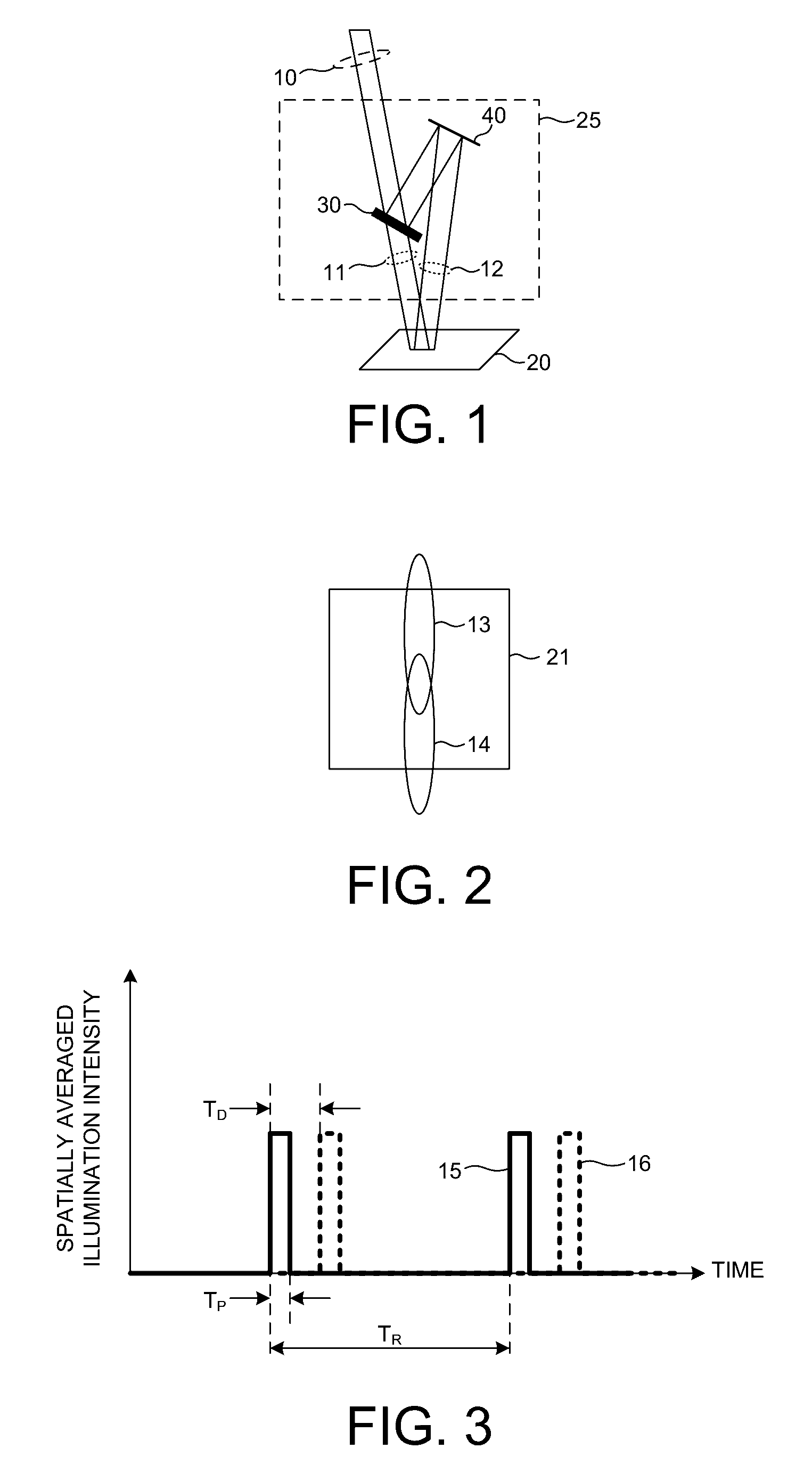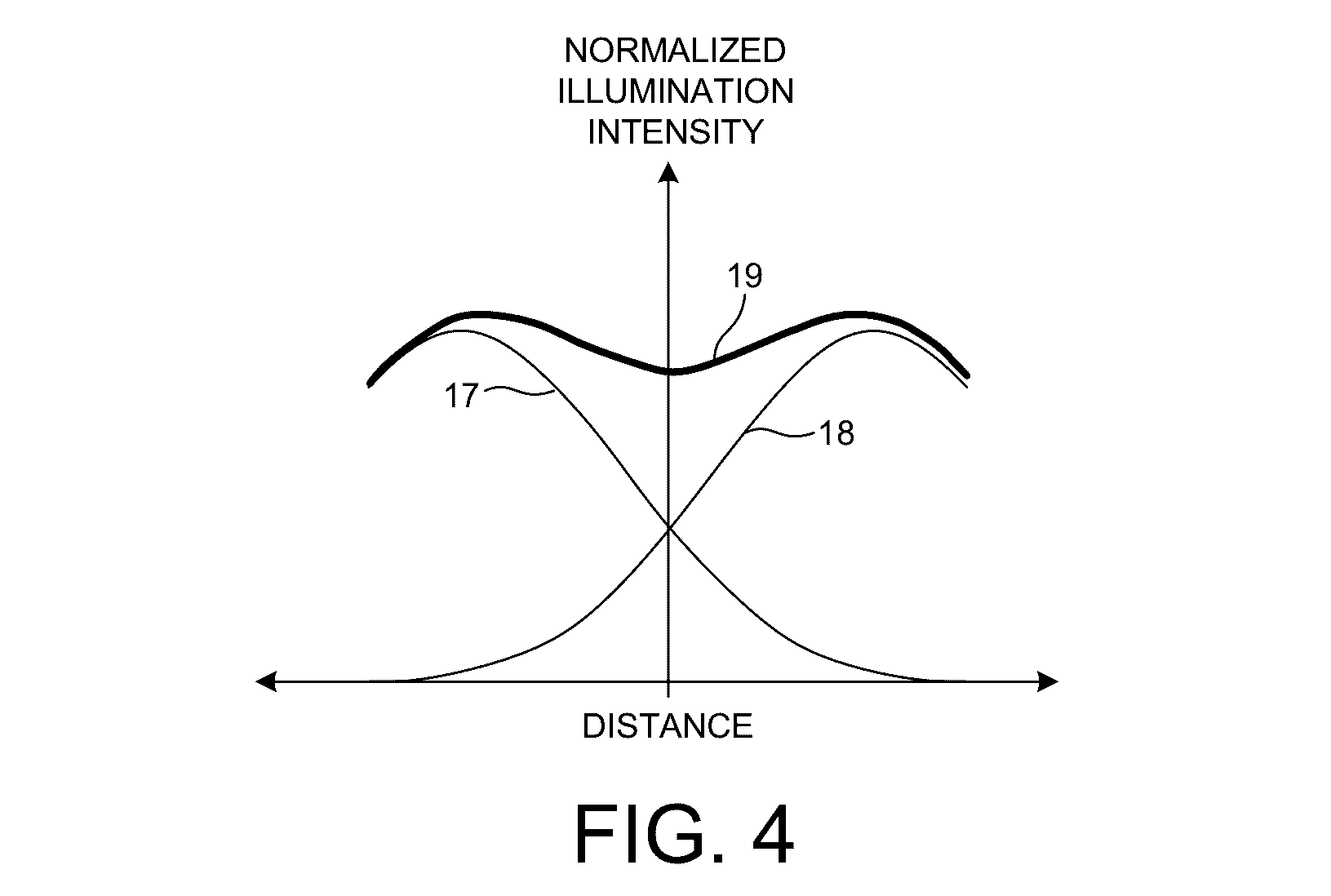Multi-spot illumination for improved detection sensitivity
a multi-spot illumination and detection sensitivity technology, applied in the direction of optical radiation measurement, lighting and heating apparatus, instruments, etc., can solve the problems of excessive heat generation by the interaction of incident optical radiation with the wafer surface, the power density of the incident laser beam is capable of damaging the wafer surface, and the substrate damage is primarily related, so as to achieve a uniform illumination profile and minimize interference
- Summary
- Abstract
- Description
- Claims
- Application Information
AI Technical Summary
Benefits of technology
Problems solved by technology
Method used
Image
Examples
Embodiment Construction
[0046]Reference will now be made in detail to background examples and some embodiments of the invention, examples of which are illustrated in the accompanying drawings.
[0047]In one aspect, interferences among the multiple illumination beams are effectively mitigated by employing an optical subsystem that generates multiple illumination beams from a pulsed illumination source having a non-uniform intensity distribution. The optical subsystem introduces an optical delay among the multiple illumination beams at the surface of the specimen under inspection. Since the multiple beams illuminating the surface are temporally separated, interference among the illumination beams at the detector is minimized.
[0048]FIG. 1 depicts an embodiment of an optical subsystem 25 configured to split a beam of incoming illumination light into secondary beams of illumination light that are temporally separated at the surface of the specimen under inspection. Optical subsystem 25 receives an amount of illum...
PUM
| Property | Measurement | Unit |
|---|---|---|
| path length | aaaaa | aaaaa |
| distance | aaaaa | aaaaa |
| angle of incidence | aaaaa | aaaaa |
Abstract
Description
Claims
Application Information
 Login to View More
Login to View More - R&D
- Intellectual Property
- Life Sciences
- Materials
- Tech Scout
- Unparalleled Data Quality
- Higher Quality Content
- 60% Fewer Hallucinations
Browse by: Latest US Patents, China's latest patents, Technical Efficacy Thesaurus, Application Domain, Technology Topic, Popular Technical Reports.
© 2025 PatSnap. All rights reserved.Legal|Privacy policy|Modern Slavery Act Transparency Statement|Sitemap|About US| Contact US: help@patsnap.com



